

ExhibiTricks: The Museum Exhibit Design Blog. Who doesn't like free stuff?

Here are some links to some great exhibit design resources that come from the POW! Website: A constantly updated compendium of resources for museum design and exhibit fabrication (including websites and contact information. My article from the January/February 2014 issue of ASTC's Dimensions magazine. Some simple, inexpensive ways to add to your exhibits program. Human-centered design for cultural institutions. ExhibiTricks: The Museum Exhibit Design Blog. A recent article in The Washington Post about the new exhibition “Nation to Nation: Treaties Between the United States and American Indian Nations” at the Smithsonian National Museum of the American Indian (NMAI) made me think about the importance of "The Big Idea" in exhibition development.

The Post journalists basically put forward the notion that much of the NMAI visitor experience inside the exhibitions (but not the universally acclaimed museum cafe!) Suffers from a lack of clear organizing concepts. Hemingway. FREE Museum Exhibit Design Resources and Articles. Pop Up Museums Emphasize Conversations - Getting Smart by Winifred Kehl - education, Free Choice Learning, museum, STEM.
The Uni Project: A Portable Reading Room. Way back in February, Leslie Davol blogged for the Center for the Future of Museums about the Uni Project, a portable reading room she founded and runs.
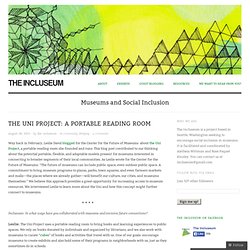
This blog post contributed to our thinking about the potential portable, flexible, and adaptable models present for museums interested in connecting to broader segments of their local communities. As Leslie wrote for the Center for the Future of Museums: “The future of museums can include public space, even outdoor public space. A commitment to bring museum programs to plazas, parks, town squares, and even farmers markets and malls—the places where we already gather—will benefit our culture, our cities, and museums themselves.” We believe this approach provides a great opportunity for increasing access to museum resources. We interviewed Leslie to learn more about the Uni and how this concept might further connect to museums. Incluseum: In what ways have you collaborated with museums and envision future connections? “What is this thing?” The Poisoners: Solve the mystery if you dare - Auckland Museum New Zealand. Your Take On Our Photographs.
Visitors Are Heterogeneous: An Interview With Erika Kiessner. Erika Kiessner is an Exhibit Developer and Prototyper who is passionate about great exhibit experiences and the wonders of the world we live in.
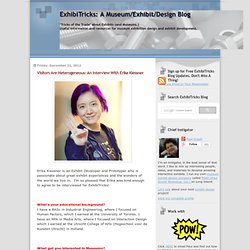
I'm so pleased that Erika was kind enough to agree to be interviewed for ExhibiTricks! What’s your educational background? I have a BASc in Industrial Engineering, where I focused on Human Factors, which I earned at the University of Toronto. I have an MFA in Media Arts, where I focused on Interaction Design which I earned at the Utrecht College of Arts (Hogeschool voor de Kunsten Utrecht) in Holland. What got you interested in Museums?
How to Build a Museum Exhibit in an Hour. The nature of small museums (limited staff, busy schedules) sometimes necessitates that we build an exhibit very quickly.
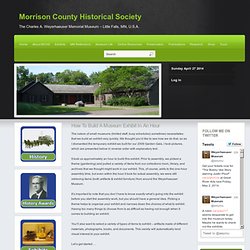
We thought you’d like to see how we do that, so as I dismantled the temporary exhibit we built for our 2009 Garden Gala, I took pictures, which are presented below in reverse order with explanatory text. It took us approximately an hour to build this exhibit. Www.nps.gov/museum/publications/MHIII/mh3ch7.pdf. ExhibitFiles - A community site for exhibit designers and developers - ExhibitFiles. Hasidic Show Draws Crowds Amid Political Debate in Israel. A Hasidic rabbi holds a modesty ribbon tied around the waist of his daughter on her wedding day.
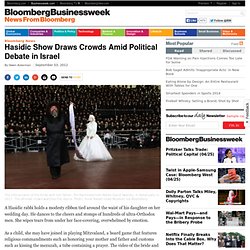
He dances to the cheers and stomps of hundreds of ultra-Orthodox men. A blog of museum planning by an experienced exhibition designer. A better way to create exhibitions ? Exhibition Design A year ago we started work on a 15,000 square foot start up Science Center.
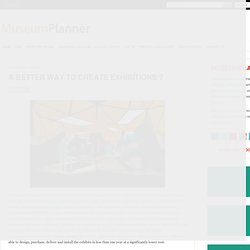
Most Science Centers cost approximately $350-$500 per sq. ft. (see 2011 exhibition cost survey). This Science Center had neither the time nor the budget to go through the typical museum design process; prototyping, value engineering, fabrication and installation process. Smithsonian Institution Traveling Exhibition Service - Green Revolution exhibition. Media only: Lindsey Koren (202) 633-3122; korenl@si.edu Media website: Smithsonian Offers A New Take on Temporary Exhibition with Virtually No Carbon Footprint The typical recipe for traveling a museum exhibition is to pack objects into crates, load them onto trucks, and then have those trucks travel the highways to museums across the country.

The Smithsonian Institution Traveling Exhibition Service (SITES) is partnering with the Museum of Science and Industry, Chicago (MSI) to present an innovative, temporary museum exhibit with virtually no carbon footprint that provides kids and their families with easy lifestyle changes they can make to be more environmentally responsible. With “Green Revolution” participating museums receive all of the necessary design files and instructions digitally, allowing them to construct their very own home grown "eco-zibit" from re-used, recycled materials found within their local community. Media.vam.ac.uk/media/documents/gallery_text_writing_guide_updated.pdf. ExhibiTricks: A Museum/Exhibit/Design Blog. Www.museum.state.il.us/muslink/pdfs/readlabel.pdf.
Gene's Exhibit Gallery. Carnegie Museum of Natural History, Pittsburgh On the wall they have mounted a small pterydactyl (a flying reptile from dinosaur times).
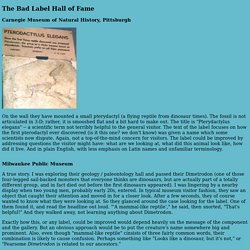
The fossil is not articulated in 3-D; rather, it is smooshed flat and a bit hard to make out. The title is "Pterydactylus elegans" -- a scientific term not terribly helpful to the general visitor. Putting Visitors First: An Interview with Beth Redmond-Jones. Since 1988, Beth Redmond-Jones has developed, designed, and project managed exhibitions for museums, interpretive centers, zoos, and aquariums, including Carnegie Museum of Natural History, the National Aquarium in Baltimore, Bay Area Discovery Museum, the Alaska SeaLife Center, Exploratorium, California Science Center, National Park Service, and the United States Holocaust Memorial Museum.
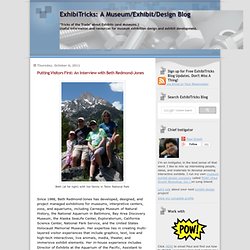
Her expertise lies in creating multi-layered visitor experiences that include graphics, text, low and high-tech interactives, live animals, media, theater, and immersive exhibit elements. Her in-house experience includes Director of Exhibits at the Aquarium of the Pacific, Assistant to the Director of Public Programs at the Exploratorium, and Assistant Registrar at the Tucson Museum of Art. Beth was kind enough to answer a few questions for ExhibiTricks readers: What’s your educational background? I have an MA in Museum Studies from John F. What got you interested in Museums?